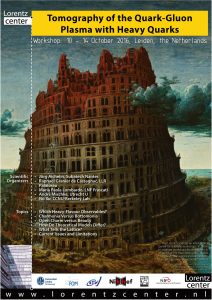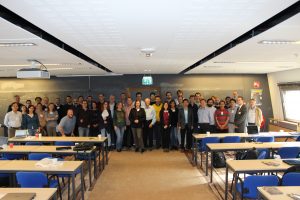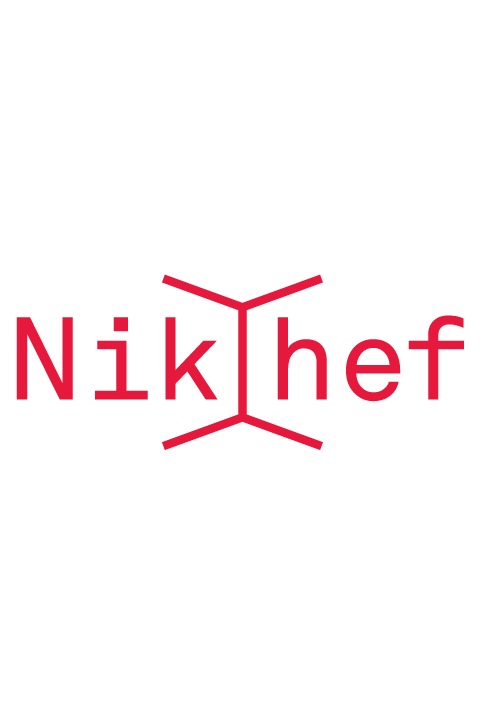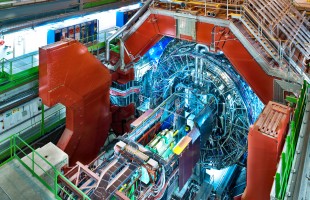
In cosmology, it is assumed that matter, of which the whole universe and we are made, was created from a plasma of elementary particles in the first microseconds after the Big Bang. This Quark-Gluon Plasma (QGP) is characterised by an equilibrated system of free quarks and gluons that are normally confined inside protons and neutrons constituting atomic nuclei.
One of the primary aims of the field of high-energy heavy-ion physics is to recreated and carefully study the complex nature of the QGP in the laboratory by colliding heavy atomic nuclei at high energies. Recent results from the Relativistic Heavy Ion Collider (RHIC) at Brookhaven (USA) and the Large Hadron Collider (LHC) at CERN (Switzerland), in which the organisers are involved, have revealed compelling evidence for the existence of the QGP. The next logical step is the detailed characterisation of the QGP properties.

Over the last decade, different experimental probes have been used for the characterisation of the QGP. Heavy quarks play a crucial role as a probe thanks to their large mass with respect to the temperature of the plasma consisting of gluons and light quarks. Therefore, heavy quarks are ideal probes for the study of the QGP properties because they are produced in the very early stage of the collision testifying the entire space-time evolution of the system. Furthermore, the thermalisation time of heavy quarks is likely to be larger than the lifetime of the plasma, which offers the unique opportunity to have a non-fully thermalised probe that will carry more information on its dynamical interaction with the medium. In addition, from the theoretical point of view, the large mass of heavy quarks makes the evaluation of the so-called Quarkonia correlators and transport coefficients feasible directly from lattice QCD calculations.
Furthermore, the experimental results at both RHIC and LHC collision energies have surprisingly shown a large suppression of the transverse momentum dependent nuclear modification factor (RAA) of heavy-quark particles in heavy-ion collisions and a large elliptic flow v2 has been observed. This has challenged all theoretical approaches that are not able to describe correctly both observables (RAA and v2).
While the measurements of the dynamics of heavy quarks in the medium became feasible in the last decade, the physics of Quarkonia production is historically one the main probe of the existence of the QGP and has been studied for nearly thirty years. The new experiments at the LHC and their relation to the results from RHIC allow clarifying the expected Quarkonia melting along with the recombination and regeneration dynamics in the plasma. Moreover, new insights were obtained from the recent developments in lattice QCD from the evaluation of the spectral functions and the possibility at the LHC to reconstruct experimentally the presence of single excited states in the QGP, especially for bottomonia states. This is opening up the possibility to have stringent constraints from both the theoretical and experimental sides for the understanding of the Quarkonia production in the plasma.
The Lorentz workshop had established a number of goals:
– define common understanding of the crucial issues
– identify open questions
– develop strategies (for the upcoming 5 years)
The workshop was considered a great success with the workshop’s goals being well addressed, resulting in a paper summarising the perspectives and recommendations for the field for the future.
More information
Afdeling Wetenschapscommunicatie Nikhef – Surya Bonam – Tel 020 592 5075
Dr. André Mischke, researcher at Nikhef for the ALICE programme – Tel 020 592 2028
Read the slides of the closing of the workshop (PDF).

